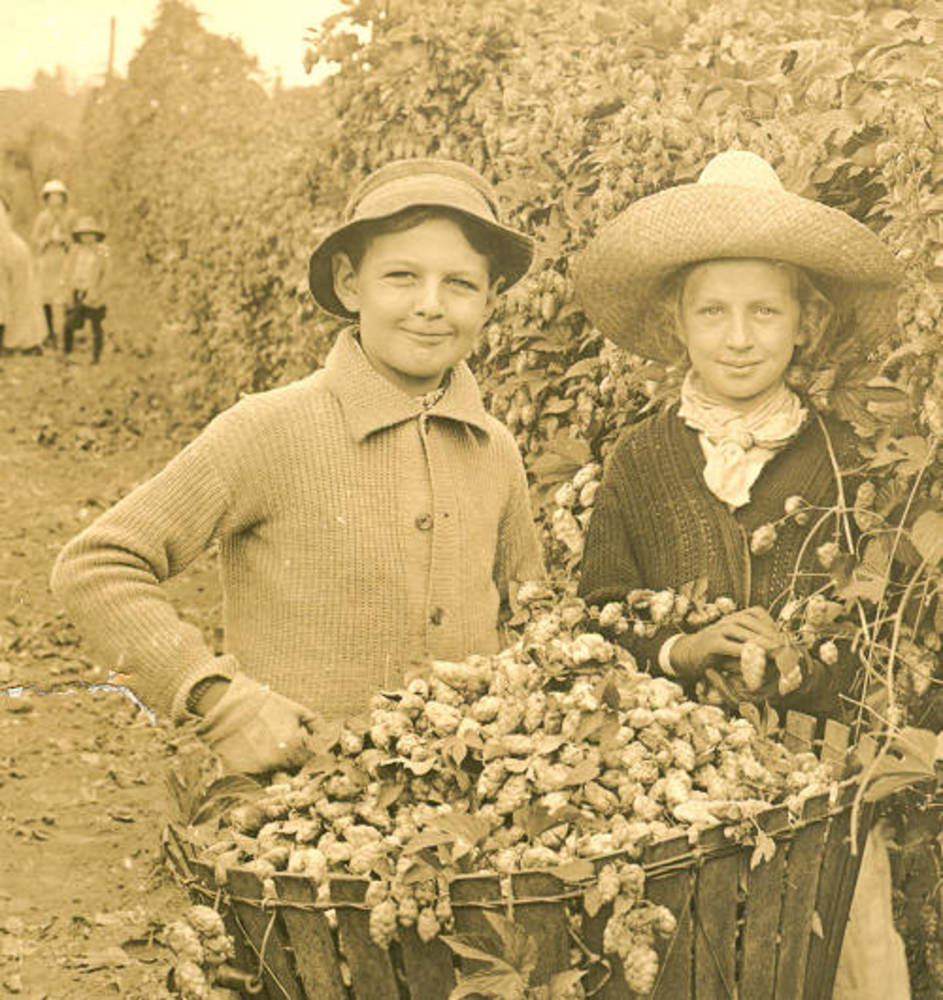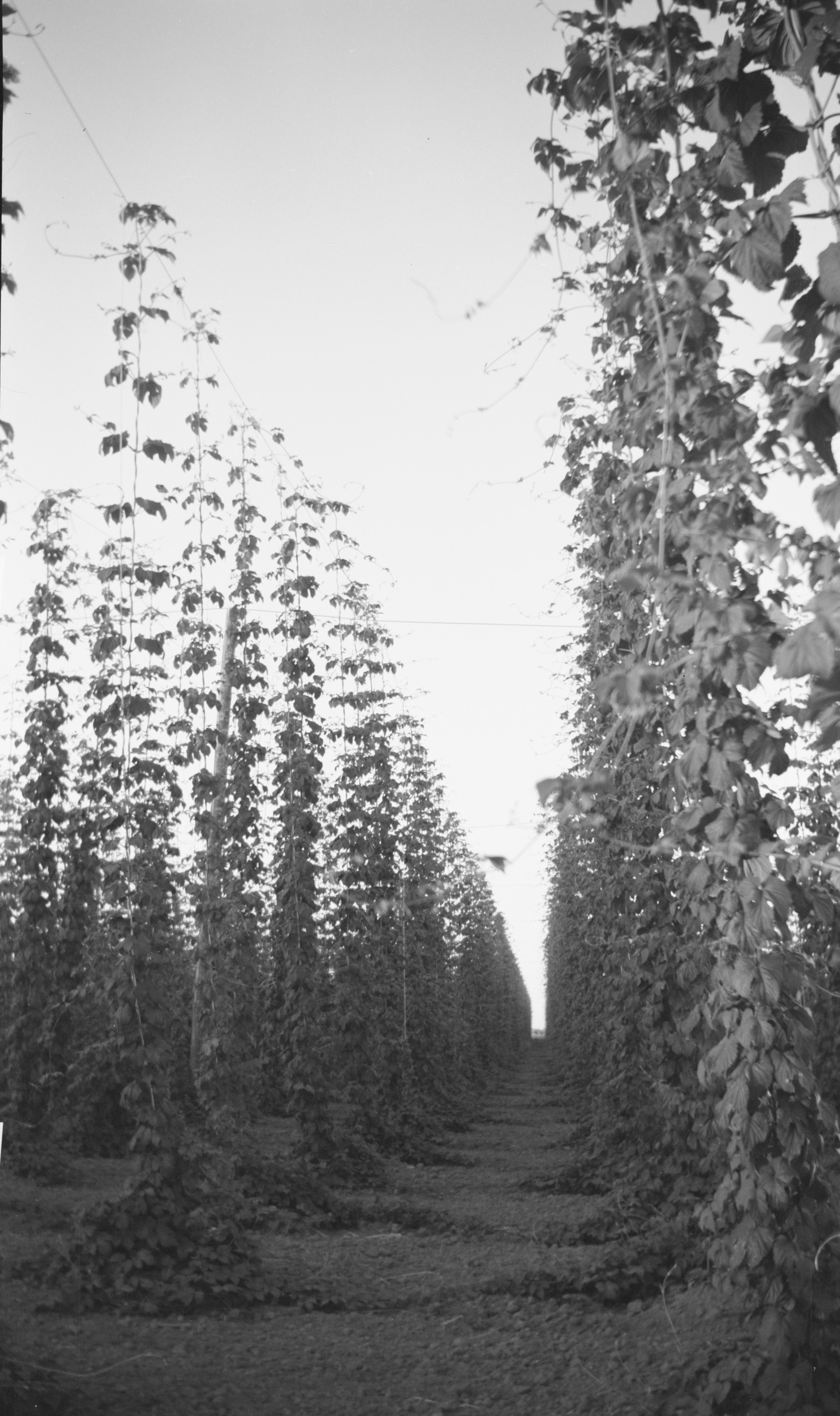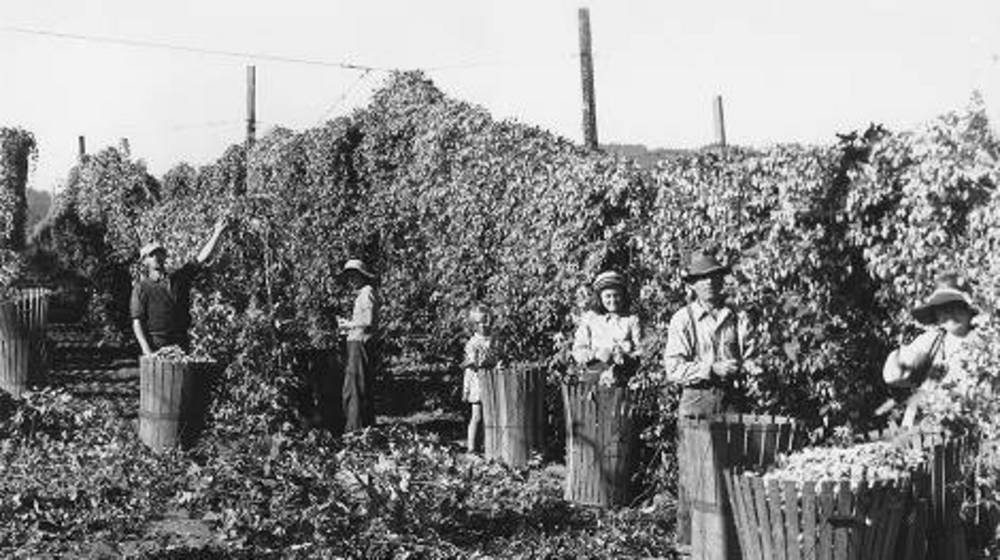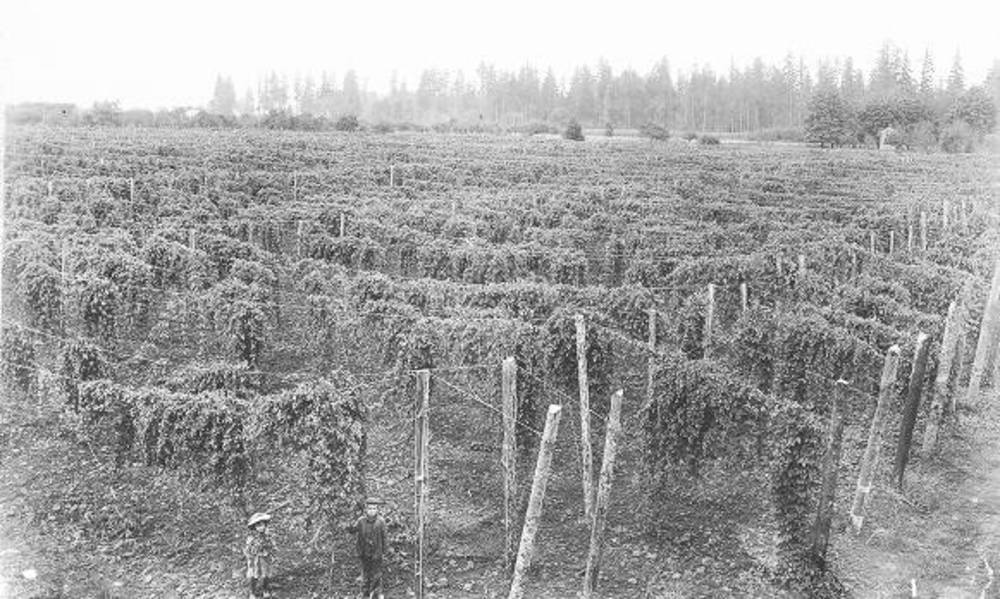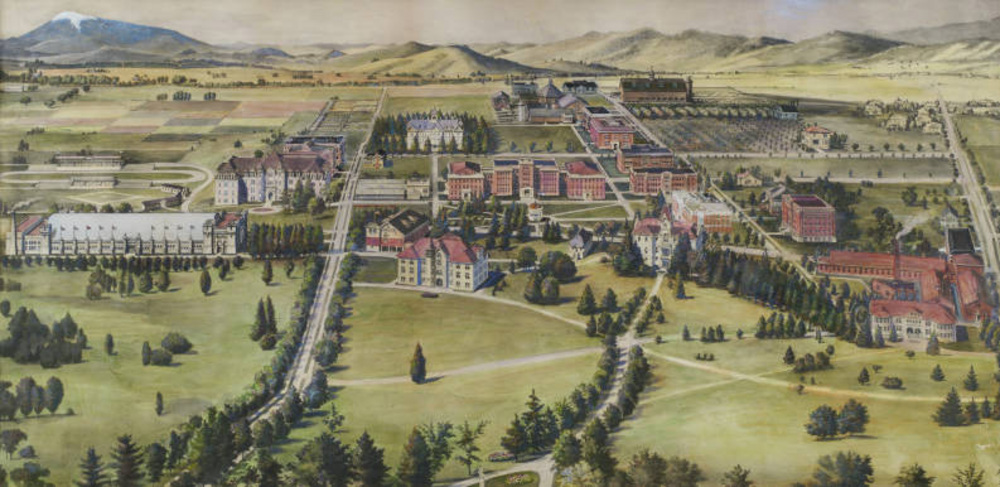Hops are perennial, cone-producing, climbing plants native to Europe, Asia, and North America. While originally cultivated for ornamental or medicinal purposes over a thousand years ago, brewers across Europe began to use hops to flavor and preserve beer by the fifteenth century. The practice continues to the present as brewers worldwide use a resin from female hop cones, called lupulin.
Commercial hop production in the United States began in New York during the early nineteenth century. In 1867, William Wells of Buena Vista planted the first commercial hop yard in Oregon. Though hardly a major contributor to the global marketplace, Wells helped inspire others to invest in the specialty crop.
Early hop production in Oregon occurred on small family farms with typically less than twenty acres dedicated to the crop. In most instances, families grew hops as their sole cash crop, and local families or regional Indians provided the necessary labor for harvest in late August and September.
From 1905 to 1915, Oregon held the distinction as the nation's largest hop producer. Despite Prohibition and the Great Depression, Oregon hop production grew after World War I due to the disastrous effects of the war on European agriculture. From 1922 to 1943, Oregon regained the honor as the nation's largest producer, and by the 1930s (following the repeal of Prohibition), the state’s hop growers expanded production to include over 20,000 acres of hops for a number of years. At the time, the area around Independence in Polk County was known as the "Hop Center of the World."
The increase in production required thousands of new seasonal laborers to harvest the crop. Growers advertised in newspapers to recruit urban families and provided cabins or tents, water, and other necessities for the hop-pickers. Many of the operations included entertainment, such as music and campfires, which added to a general festive atmosphere across Oregon during hop harvest season. Pickers enjoyed decent wages and a retreat from the city, although there were occasional labor disputes.
By the early 1950s, mechanical picking machines eliminated the need for large numbers of seasonal laborers. During the next two decades, growers increased the acreage of their hop yards to pay for their investment in mechanization. Those without mechanical pickers were forced to abandon the crop. At the same time, researchers from the Crop Science Department at Oregon State University generated new hop varieties, such as the Willamette and Cascade, that were integrated into commercial production in the region by the 1970s and 1980s.
In recent years, Oregon farmers have worked an average of 5,000-6,000 acres a year to produce between 8 to 11 million pounds of hops (5 percent of the world supply), second only to Washington State (which produces 25 percent of the world supply). Hops are grown commercially only in Marion and Polk counties, where fewer than 30 families work less than 400 acres per crop on average. A majority of the families are third and fourth generation hop growers.
While hop culture has become increasingly sophisticated, with irrigation and fertilization technologies, the basic agricultural method of training vines to a wire trellis system has remained largely the same for 100 years. Many growers are proud that the packaging of hop cones for distribution to brewers or cold storage occurs on the farm itself, with no additional processing.
-
![Harvesting hops in the Willamette Valley, 1915.]()
Hops, children harvesting, 1915.
Harvesting hops in the Willamette Valley, 1915. Oreg. State Univ. Archives, Gerald W. Williams Collec., Willamette Valley album, WilliamsG:WV_children hops color
-
![]()
Rows of hops in Willamette Valley.
Oregon Historical Society Research Library, OrgLot74_0056 -
![]()
Women's Land Army workers harvesting hops in the Willamette Valley, 1944.
Oreg. State Univ. Archives, Harriet's Coll., HC0972
-
![Harvesting hops near Independence, 1940.]()
Hop harvesting near Independence, 1940.
Harvesting hops near Independence, 1940. Oreg. State Univ. Archives, Gerald W. Williams Collec., Willamette Valley album, WilliamsG:WV_hops Independence
-
![Hop field, Willamette Valley, 1900.]()
Hop field, ca. 1900.
Hop field, Willamette Valley, 1900. Oreg. State Univ. Archives, Gerald W. Williams Collec., Willamette Valley album, WilliamsG_Ford46
Related Entries
-
![Brewing industry in Oregon]()
Brewing industry in Oregon
High-quality water and ideal conditions for growing hops set the stage …
-
![Oregon State University]()
Oregon State University
Oregon State University (OSU) traces its roots to 1856, when Corvallis …
Related Historical Records
Map This on the Oregon History WayFinder
The Oregon History Wayfinder is an interactive map that identifies significant places, people, and events in Oregon history.
Further Reading
Keeler, Elizabeth Louise. "The Landscape of Horticultural Crops in the Northern Willamette Valley from 1850 to 1920." Ph.D. Dissertation, University of Oregon, 1994.
Kopp, Peter A. Hoptopia: A World of Agriculture and Beer in Oregon's Willamette Valley. Oakland, CA: University of California Press, 2016.
Tomlan, Michael A. Tinged in Gold: Hop Culture in the United States. Athens, GA: University of Georgia Press, 1992.

